5 highlights from a trip to Tanzania
A Tanzanian safari epitomises the ‘safari dream’. With rolling grassy plains, lazy lions on kopjies, migrating herbivores and luxury tented accommodation, it is just as one would imagine a scene from Africa. There are however, so many different options when it comes to choosing where to stay on safari so below you will find some of the highlights of my recent trip which will hopefully transport you from your home into the heart of Africa. During the current situation we all find ourselves in, I hope this will give you all a little bit of adventure from the warmth of your armchair and it might even give you some inspiration for future travels, when it is safe to do so.
The Highlands and the Ngorongoro Crater
The Ngorongoro Crater is one of the most famous places on Earth, especially for those wanting to tick off the ‘Big 5’. With a brilliant lion population and a heavily guarded population of black rhino, this is one of the best places in the world for regular sightings. This fame has however led to it becoming busier over time, so choosing when to visit is important. I went at the end of May and although it wasn’t the high season, there were still a remarkable number of vehicles traversing the crater’s floor.
 When visiting the crater you have two options: to stay on the crater’s rim or to stay in the surrounding areas. My destination of choice was Asilia’s The Highlands. This completely unique lodge is made up of a handful of bubble-like rooms that sit on the side of the Olmoti Volcano and offers views into its own beautiful Crater.
When visiting the crater you have two options: to stay on the crater’s rim or to stay in the surrounding areas. My destination of choice was Asilia’s The Highlands. This completely unique lodge is made up of a handful of bubble-like rooms that sit on the side of the Olmoti Volcano and offers views into its own beautiful Crater.
 Although it is located about half an hour away from the nearest entry point to the crater, The Highland’s charm is in its exclusivity and seclusion. The rooms are beautifully designed, mixing luxury with a warm and homely feel. The log fire in your room burns until sunrise, keeping your room nice and toasty as it does get cold up there! Apart from entering the crater, other activities certainly worth doing are hikes in the surrounding undulating landscape and visiting the local Masai villages which offer an introduction into one of the most fascinating tribes on the planet.
The Great Migration
If there is one phenomenon on Earth that captures the imagination of the world’s population and encapsulates the true essence of Africa then it is the Wildebeest’s Great Migration. Not having been to Tanzania previously, the millions of wildebeest and zebra had been nothing more than a David Attenborough narrated television spectacle, yet nothing can quite prepare you for the sheer scale of what you witness on these grassy plains. As the plane circled above the Seronera airstrip in the central Serengeti, thousands of black dots milled about as far as the eye could see – it was the wildebeest.
Although it is located about half an hour away from the nearest entry point to the crater, The Highland’s charm is in its exclusivity and seclusion. The rooms are beautifully designed, mixing luxury with a warm and homely feel. The log fire in your room burns until sunrise, keeping your room nice and toasty as it does get cold up there! Apart from entering the crater, other activities certainly worth doing are hikes in the surrounding undulating landscape and visiting the local Masai villages which offer an introduction into one of the most fascinating tribes on the planet.
The Great Migration
If there is one phenomenon on Earth that captures the imagination of the world’s population and encapsulates the true essence of Africa then it is the Wildebeest’s Great Migration. Not having been to Tanzania previously, the millions of wildebeest and zebra had been nothing more than a David Attenborough narrated television spectacle, yet nothing can quite prepare you for the sheer scale of what you witness on these grassy plains. As the plane circled above the Seronera airstrip in the central Serengeti, thousands of black dots milled about as far as the eye could see – it was the wildebeest.
 During numerous days spent at different camps in the middle of the Serengei, viewing these animals was sensational. From the mobile camps that follow the migration throughout the year like Nomad’s Serengeti Safari Camp or &Beyond’s Serengeti Under Canvas, to the permanent camps like Asilia’s Dunia the variation in game viewing in the central Serengeti region is fabulous. The variety in habitat ranging from acacia woodlands, open grasslands and rocky outcrops provides the perfect habitat to view all members of the sought after big five, plus so much more.
During numerous days spent at different camps in the middle of the Serengei, viewing these animals was sensational. From the mobile camps that follow the migration throughout the year like Nomad’s Serengeti Safari Camp or &Beyond’s Serengeti Under Canvas, to the permanent camps like Asilia’s Dunia the variation in game viewing in the central Serengeti region is fabulous. The variety in habitat ranging from acacia woodlands, open grasslands and rocky outcrops provides the perfect habitat to view all members of the sought after big five, plus so much more.
 Visiting at the end of May, meant that the migration was just passing through the central region, heading either West towards the Grumeti or North to the Kogatende areas. Being among the millions of wildebeest as they embark on this journey is almost impossible to describe, the sounds, sights and smells are all awe-inspiring and of course where there is prey, there are predators… If you are wanting to visit the Serengeti for the migration, then it is vital to know when and where the wildebeest will be during the time of year you want to visit. In short, from July through to the end of October, most of the migration is in the Kogatende (North) region, whilst November through to April sees the wildebeest congregate on the Ndutu plains before heading into the Central and then Western Grumeti regions during June.
Up close Big Cat encounters
Whilst the Serengeti is abundant with big (and small) cats, there is one area famed for its predator density. On the Eastern reaches of the National Park is an area that has only recently opened to visitors. Previously cordoned off for research, the plains in this part have become bountiful with cheetahs, lions and servals. In this area is a camp, located an hour and a half from any other camp that gives you some of the most intimate and personal sightings in the Serengeti: Namiri Plains. Recently refurbished, this spacious, elegant and luxurious camp offers every amenity one could wish for and when you combine it with exceptional game viewing, it is hard to beat.
Visiting at the end of May, meant that the migration was just passing through the central region, heading either West towards the Grumeti or North to the Kogatende areas. Being among the millions of wildebeest as they embark on this journey is almost impossible to describe, the sounds, sights and smells are all awe-inspiring and of course where there is prey, there are predators… If you are wanting to visit the Serengeti for the migration, then it is vital to know when and where the wildebeest will be during the time of year you want to visit. In short, from July through to the end of October, most of the migration is in the Kogatende (North) region, whilst November through to April sees the wildebeest congregate on the Ndutu plains before heading into the Central and then Western Grumeti regions during June.
Up close Big Cat encounters
Whilst the Serengeti is abundant with big (and small) cats, there is one area famed for its predator density. On the Eastern reaches of the National Park is an area that has only recently opened to visitors. Previously cordoned off for research, the plains in this part have become bountiful with cheetahs, lions and servals. In this area is a camp, located an hour and a half from any other camp that gives you some of the most intimate and personal sightings in the Serengeti: Namiri Plains. Recently refurbished, this spacious, elegant and luxurious camp offers every amenity one could wish for and when you combine it with exceptional game viewing, it is hard to beat.
 Whilst staying there we started following a cheetah mother and her adolescent cubs when a large herd of Thompsons Gazelle came into view as they decided to quench their thirst in the mid-morning heat. With telepathic-like communication, the cubs sat in the grass whilst their mother hunkered down and edged closer to the unsuspecting antelopes. She waited, and so did we.
The minutes ticked by and the gazelles that had finished drinking started to make their way towards the cheetah. The first ten or so walked obliviously by her, she coiled herself, muscles taught, ready to pounce. In a split second the target was made and unraveling her long slender body, she gave chase. It lasted no more than a split second, but the cheetah’s front paws struck the back legs of the ‘tommie’ and sent it cartwheeling. Grabbing the dazed gazelle by the throat, it seemed as though the cheetah had won herself and her cub’s breakfast. Nature had other ideas though. From the long grass appeared a spotted hyena, bloodied mouth and rounded belly suggesting a successful morning of scavenging, yet there was more food on offer here. Cackling as it did so, the hyena gave chase towards the cheetah. The cat dropped her morning’s prize and ran with her cubs up the nearest tree. Before the hyena could react, the gazelle jumped up and ran off to join the rest of its herd. With no food on offer and the cheetahs now out of reach, the hyena sauntered off into the distance.
Boating and wild dogs in the Selous
As you head South in Tanzania, the safari destinations become wilder and more untamed. The Selous is the largest game reserve in Africa and covers an area of almost fifty-five thousand square kilometres and is a seasonal destination. Closed from the middle of March to the end of May when the rains are at their heaviest, the game viewing is at its best from July until October. What makes this reserve so spectacular are the meandering waterways that stretch across the landscape like veins. Although there is no hiding the fact that the wildlife density isn’t the same as you get in the Serengeti, the waterways and the lush vegetation make for some brilliant game viewing.
Whilst staying there we started following a cheetah mother and her adolescent cubs when a large herd of Thompsons Gazelle came into view as they decided to quench their thirst in the mid-morning heat. With telepathic-like communication, the cubs sat in the grass whilst their mother hunkered down and edged closer to the unsuspecting antelopes. She waited, and so did we.
The minutes ticked by and the gazelles that had finished drinking started to make their way towards the cheetah. The first ten or so walked obliviously by her, she coiled herself, muscles taught, ready to pounce. In a split second the target was made and unraveling her long slender body, she gave chase. It lasted no more than a split second, but the cheetah’s front paws struck the back legs of the ‘tommie’ and sent it cartwheeling. Grabbing the dazed gazelle by the throat, it seemed as though the cheetah had won herself and her cub’s breakfast. Nature had other ideas though. From the long grass appeared a spotted hyena, bloodied mouth and rounded belly suggesting a successful morning of scavenging, yet there was more food on offer here. Cackling as it did so, the hyena gave chase towards the cheetah. The cat dropped her morning’s prize and ran with her cubs up the nearest tree. Before the hyena could react, the gazelle jumped up and ran off to join the rest of its herd. With no food on offer and the cheetahs now out of reach, the hyena sauntered off into the distance.
Boating and wild dogs in the Selous
As you head South in Tanzania, the safari destinations become wilder and more untamed. The Selous is the largest game reserve in Africa and covers an area of almost fifty-five thousand square kilometres and is a seasonal destination. Closed from the middle of March to the end of May when the rains are at their heaviest, the game viewing is at its best from July until October. What makes this reserve so spectacular are the meandering waterways that stretch across the landscape like veins. Although there is no hiding the fact that the wildlife density isn’t the same as you get in the Serengeti, the waterways and the lush vegetation make for some brilliant game viewing.
 With the option of boating, walking or driving safaris, the Selous offers a brilliant array of activities. Sand Rivers and Beho Beho are the pick of the lodges here, both offering extremely luxurious and lavish rooms topped with excellent guiding and brilliant hospitality. Boating in the Selous allows for unique up-close encounters of a variety of bird life that you would have to pay double for in countries such as Botswana. Siwandu in Selous has solar powered boats allowing you to glide effortlessly and silently along these waterways, giving prime opportunities to capture the more skittish and elusive bird species.
With the option of boating, walking or driving safaris, the Selous offers a brilliant array of activities. Sand Rivers and Beho Beho are the pick of the lodges here, both offering extremely luxurious and lavish rooms topped with excellent guiding and brilliant hospitality. Boating in the Selous allows for unique up-close encounters of a variety of bird life that you would have to pay double for in countries such as Botswana. Siwandu in Selous has solar powered boats allowing you to glide effortlessly and silently along these waterways, giving prime opportunities to capture the more skittish and elusive bird species.
 It isn’t just on the water where the Selous delivers though, on land this enormous game reserve is home to one of the last strongholds of the highly endangered wild dog. Apart from the Greater Kruger in South Africa, Mana Pools in Zimbabwe and a select few private concessions in the Okavango Delta, the Selous offers one of the highest chances for viewing these highly enigmatic canines, I was lucky enough to come across a pack and due the relaxed rules regarding off-roading, we could follow them through the bush as they hunted.
Off the beaten path in Ruaha
In complete contrast to the waterways of the Selous, Ruaha National Park is a dry and barren landscape that has baobab studded horizons and very limited water sources which makes it the perfect destination to visit after some time in the Selous.
It isn’t just on the water where the Selous delivers though, on land this enormous game reserve is home to one of the last strongholds of the highly endangered wild dog. Apart from the Greater Kruger in South Africa, Mana Pools in Zimbabwe and a select few private concessions in the Okavango Delta, the Selous offers one of the highest chances for viewing these highly enigmatic canines, I was lucky enough to come across a pack and due the relaxed rules regarding off-roading, we could follow them through the bush as they hunted.
Off the beaten path in Ruaha
In complete contrast to the waterways of the Selous, Ruaha National Park is a dry and barren landscape that has baobab studded horizons and very limited water sources which makes it the perfect destination to visit after some time in the Selous.
 Ruaha is a park like no other, as large as the Kruger but with only a handful of lodges, any time spent here really feels as though you are in the wild. In the south of the park is an isolated lodge called Jongomero. Situated on the banks of a dry riverbed, this luxury tented camp is a brilliant place to truly immerse yourself in nature. With no other camps here, coming across vehicles is almost as rare as a pangolin and it gives you one of the most exclusive and intimate safari experiences.
Mirroring the Selous, Ruaha’s most prevalent time for game viewing is in the drier months from July through to the end of October. As the dry season progresses, herds of buffaloes congregate in their thousands. Following them closely however are Ruaha’s large lion prides looking to take advantage of any weak or struggling individuals giving rise to some documentary-worthy spectacles between two of Africa’s most fearsome animals.
Ruaha is a park like no other, as large as the Kruger but with only a handful of lodges, any time spent here really feels as though you are in the wild. In the south of the park is an isolated lodge called Jongomero. Situated on the banks of a dry riverbed, this luxury tented camp is a brilliant place to truly immerse yourself in nature. With no other camps here, coming across vehicles is almost as rare as a pangolin and it gives you one of the most exclusive and intimate safari experiences.
Mirroring the Selous, Ruaha’s most prevalent time for game viewing is in the drier months from July through to the end of October. As the dry season progresses, herds of buffaloes congregate in their thousands. Following them closely however are Ruaha’s large lion prides looking to take advantage of any weak or struggling individuals giving rise to some documentary-worthy spectacles between two of Africa’s most fearsome animals.
 In the Northern section of the park are luxury lodges like Asilia’s Jabali Ride and the family owned Ikuka that blend perfectly into the kopjies in which they were built around. The surrounding landscape in this area varies from towering baobab forests to open plains which give the perfect habitat for a mixture of Eastern and Southern wildlife. Rarely spotted animals like the serval, aardwolf and lesser kudu are among the more elusive animals that are regularly spotted here.
In the Northern section of the park are luxury lodges like Asilia’s Jabali Ride and the family owned Ikuka that blend perfectly into the kopjies in which they were built around. The surrounding landscape in this area varies from towering baobab forests to open plains which give the perfect habitat for a mixture of Eastern and Southern wildlife. Rarely spotted animals like the serval, aardwolf and lesser kudu are among the more elusive animals that are regularly spotted here.
 Marc Harris is Managing Director of Tanzania Odyssey. Tanzania Odyssey is a leading tour operator that has specialised in Tanzania since 1998.
If you would like to be a guest blogger on A Luxury Travel Blog in order to raise your profile, please contact us.
Marc Harris is Managing Director of Tanzania Odyssey. Tanzania Odyssey is a leading tour operator that has specialised in Tanzania since 1998.
If you would like to be a guest blogger on A Luxury Travel Blog in order to raise your profile, please contact us.
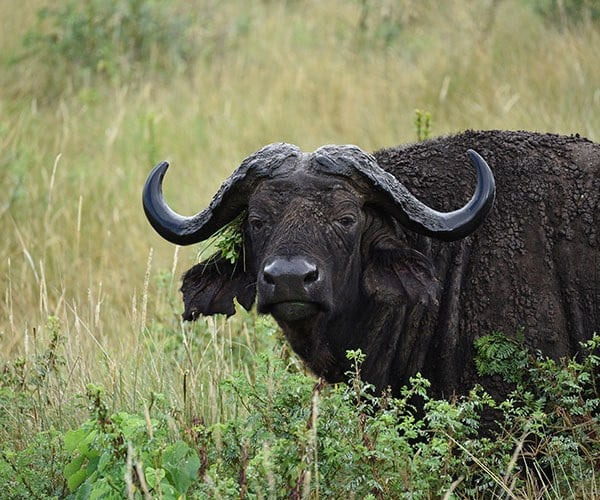 When visiting the crater you have two options: to stay on the crater’s rim or to stay in the surrounding areas. My destination of choice was Asilia’s The Highlands. This completely unique lodge is made up of a handful of bubble-like rooms that sit on the side of the Olmoti Volcano and offers views into its own beautiful Crater.
When visiting the crater you have two options: to stay on the crater’s rim or to stay in the surrounding areas. My destination of choice was Asilia’s The Highlands. This completely unique lodge is made up of a handful of bubble-like rooms that sit on the side of the Olmoti Volcano and offers views into its own beautiful Crater.
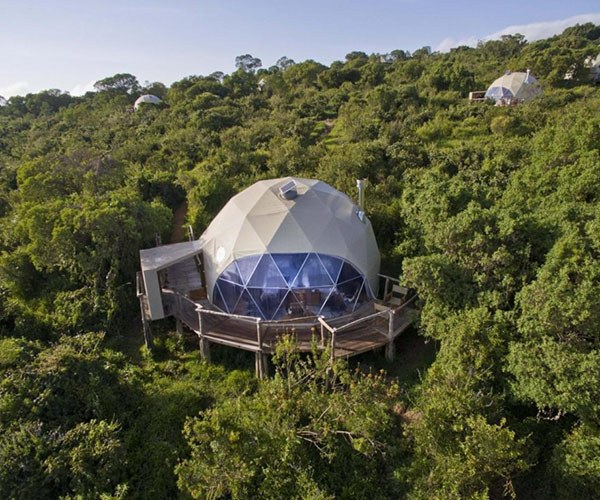 Although it is located about half an hour away from the nearest entry point to the crater, The Highland’s charm is in its exclusivity and seclusion. The rooms are beautifully designed, mixing luxury with a warm and homely feel. The log fire in your room burns until sunrise, keeping your room nice and toasty as it does get cold up there! Apart from entering the crater, other activities certainly worth doing are hikes in the surrounding undulating landscape and visiting the local Masai villages which offer an introduction into one of the most fascinating tribes on the planet.
The Great Migration
If there is one phenomenon on Earth that captures the imagination of the world’s population and encapsulates the true essence of Africa then it is the Wildebeest’s Great Migration. Not having been to Tanzania previously, the millions of wildebeest and zebra had been nothing more than a David Attenborough narrated television spectacle, yet nothing can quite prepare you for the sheer scale of what you witness on these grassy plains. As the plane circled above the Seronera airstrip in the central Serengeti, thousands of black dots milled about as far as the eye could see – it was the wildebeest.
Although it is located about half an hour away from the nearest entry point to the crater, The Highland’s charm is in its exclusivity and seclusion. The rooms are beautifully designed, mixing luxury with a warm and homely feel. The log fire in your room burns until sunrise, keeping your room nice and toasty as it does get cold up there! Apart from entering the crater, other activities certainly worth doing are hikes in the surrounding undulating landscape and visiting the local Masai villages which offer an introduction into one of the most fascinating tribes on the planet.
The Great Migration
If there is one phenomenon on Earth that captures the imagination of the world’s population and encapsulates the true essence of Africa then it is the Wildebeest’s Great Migration. Not having been to Tanzania previously, the millions of wildebeest and zebra had been nothing more than a David Attenborough narrated television spectacle, yet nothing can quite prepare you for the sheer scale of what you witness on these grassy plains. As the plane circled above the Seronera airstrip in the central Serengeti, thousands of black dots milled about as far as the eye could see – it was the wildebeest.
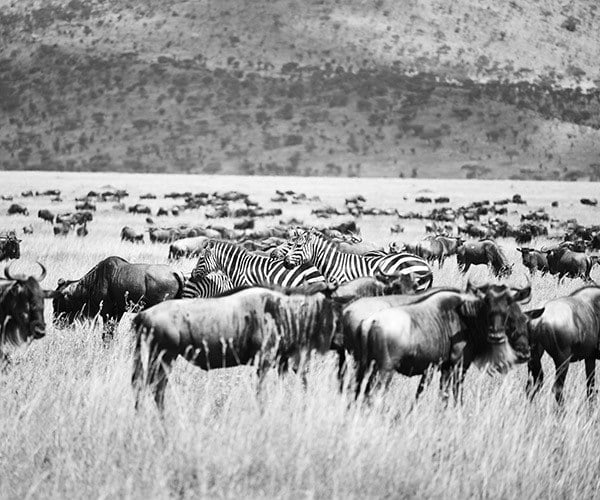 During numerous days spent at different camps in the middle of the Serengei, viewing these animals was sensational. From the mobile camps that follow the migration throughout the year like Nomad’s Serengeti Safari Camp or &Beyond’s Serengeti Under Canvas, to the permanent camps like Asilia’s Dunia the variation in game viewing in the central Serengeti region is fabulous. The variety in habitat ranging from acacia woodlands, open grasslands and rocky outcrops provides the perfect habitat to view all members of the sought after big five, plus so much more.
During numerous days spent at different camps in the middle of the Serengei, viewing these animals was sensational. From the mobile camps that follow the migration throughout the year like Nomad’s Serengeti Safari Camp or &Beyond’s Serengeti Under Canvas, to the permanent camps like Asilia’s Dunia the variation in game viewing in the central Serengeti region is fabulous. The variety in habitat ranging from acacia woodlands, open grasslands and rocky outcrops provides the perfect habitat to view all members of the sought after big five, plus so much more.
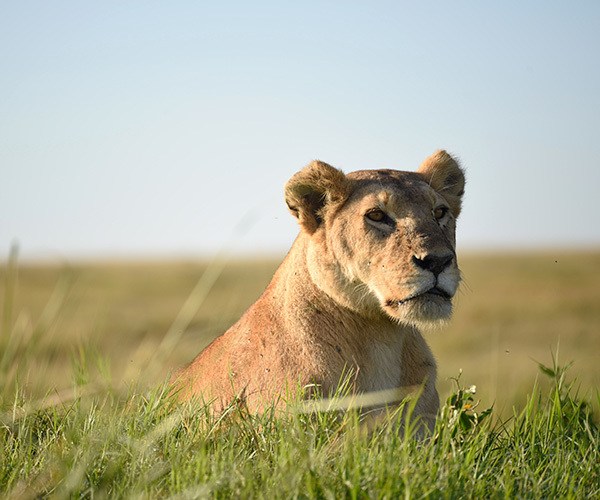 Visiting at the end of May, meant that the migration was just passing through the central region, heading either West towards the Grumeti or North to the Kogatende areas. Being among the millions of wildebeest as they embark on this journey is almost impossible to describe, the sounds, sights and smells are all awe-inspiring and of course where there is prey, there are predators… If you are wanting to visit the Serengeti for the migration, then it is vital to know when and where the wildebeest will be during the time of year you want to visit. In short, from July through to the end of October, most of the migration is in the Kogatende (North) region, whilst November through to April sees the wildebeest congregate on the Ndutu plains before heading into the Central and then Western Grumeti regions during June.
Up close Big Cat encounters
Whilst the Serengeti is abundant with big (and small) cats, there is one area famed for its predator density. On the Eastern reaches of the National Park is an area that has only recently opened to visitors. Previously cordoned off for research, the plains in this part have become bountiful with cheetahs, lions and servals. In this area is a camp, located an hour and a half from any other camp that gives you some of the most intimate and personal sightings in the Serengeti: Namiri Plains. Recently refurbished, this spacious, elegant and luxurious camp offers every amenity one could wish for and when you combine it with exceptional game viewing, it is hard to beat.
Visiting at the end of May, meant that the migration was just passing through the central region, heading either West towards the Grumeti or North to the Kogatende areas. Being among the millions of wildebeest as they embark on this journey is almost impossible to describe, the sounds, sights and smells are all awe-inspiring and of course where there is prey, there are predators… If you are wanting to visit the Serengeti for the migration, then it is vital to know when and where the wildebeest will be during the time of year you want to visit. In short, from July through to the end of October, most of the migration is in the Kogatende (North) region, whilst November through to April sees the wildebeest congregate on the Ndutu plains before heading into the Central and then Western Grumeti regions during June.
Up close Big Cat encounters
Whilst the Serengeti is abundant with big (and small) cats, there is one area famed for its predator density. On the Eastern reaches of the National Park is an area that has only recently opened to visitors. Previously cordoned off for research, the plains in this part have become bountiful with cheetahs, lions and servals. In this area is a camp, located an hour and a half from any other camp that gives you some of the most intimate and personal sightings in the Serengeti: Namiri Plains. Recently refurbished, this spacious, elegant and luxurious camp offers every amenity one could wish for and when you combine it with exceptional game viewing, it is hard to beat.
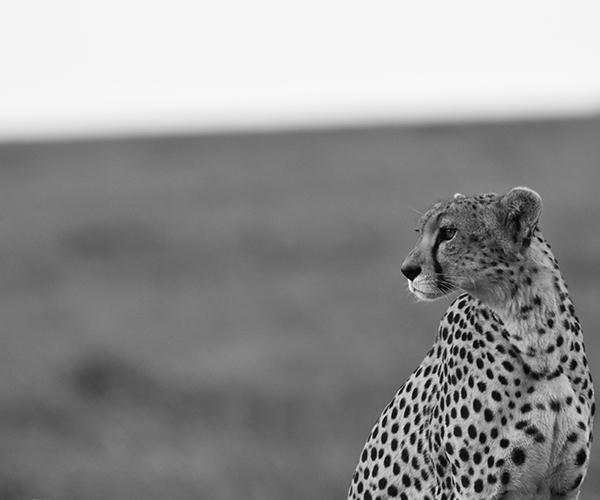 Whilst staying there we started following a cheetah mother and her adolescent cubs when a large herd of Thompsons Gazelle came into view as they decided to quench their thirst in the mid-morning heat. With telepathic-like communication, the cubs sat in the grass whilst their mother hunkered down and edged closer to the unsuspecting antelopes. She waited, and so did we.
The minutes ticked by and the gazelles that had finished drinking started to make their way towards the cheetah. The first ten or so walked obliviously by her, she coiled herself, muscles taught, ready to pounce. In a split second the target was made and unraveling her long slender body, she gave chase. It lasted no more than a split second, but the cheetah’s front paws struck the back legs of the ‘tommie’ and sent it cartwheeling. Grabbing the dazed gazelle by the throat, it seemed as though the cheetah had won herself and her cub’s breakfast. Nature had other ideas though. From the long grass appeared a spotted hyena, bloodied mouth and rounded belly suggesting a successful morning of scavenging, yet there was more food on offer here. Cackling as it did so, the hyena gave chase towards the cheetah. The cat dropped her morning’s prize and ran with her cubs up the nearest tree. Before the hyena could react, the gazelle jumped up and ran off to join the rest of its herd. With no food on offer and the cheetahs now out of reach, the hyena sauntered off into the distance.
Boating and wild dogs in the Selous
As you head South in Tanzania, the safari destinations become wilder and more untamed. The Selous is the largest game reserve in Africa and covers an area of almost fifty-five thousand square kilometres and is a seasonal destination. Closed from the middle of March to the end of May when the rains are at their heaviest, the game viewing is at its best from July until October. What makes this reserve so spectacular are the meandering waterways that stretch across the landscape like veins. Although there is no hiding the fact that the wildlife density isn’t the same as you get in the Serengeti, the waterways and the lush vegetation make for some brilliant game viewing.
Whilst staying there we started following a cheetah mother and her adolescent cubs when a large herd of Thompsons Gazelle came into view as they decided to quench their thirst in the mid-morning heat. With telepathic-like communication, the cubs sat in the grass whilst their mother hunkered down and edged closer to the unsuspecting antelopes. She waited, and so did we.
The minutes ticked by and the gazelles that had finished drinking started to make their way towards the cheetah. The first ten or so walked obliviously by her, she coiled herself, muscles taught, ready to pounce. In a split second the target was made and unraveling her long slender body, she gave chase. It lasted no more than a split second, but the cheetah’s front paws struck the back legs of the ‘tommie’ and sent it cartwheeling. Grabbing the dazed gazelle by the throat, it seemed as though the cheetah had won herself and her cub’s breakfast. Nature had other ideas though. From the long grass appeared a spotted hyena, bloodied mouth and rounded belly suggesting a successful morning of scavenging, yet there was more food on offer here. Cackling as it did so, the hyena gave chase towards the cheetah. The cat dropped her morning’s prize and ran with her cubs up the nearest tree. Before the hyena could react, the gazelle jumped up and ran off to join the rest of its herd. With no food on offer and the cheetahs now out of reach, the hyena sauntered off into the distance.
Boating and wild dogs in the Selous
As you head South in Tanzania, the safari destinations become wilder and more untamed. The Selous is the largest game reserve in Africa and covers an area of almost fifty-five thousand square kilometres and is a seasonal destination. Closed from the middle of March to the end of May when the rains are at their heaviest, the game viewing is at its best from July until October. What makes this reserve so spectacular are the meandering waterways that stretch across the landscape like veins. Although there is no hiding the fact that the wildlife density isn’t the same as you get in the Serengeti, the waterways and the lush vegetation make for some brilliant game viewing.
 With the option of boating, walking or driving safaris, the Selous offers a brilliant array of activities. Sand Rivers and Beho Beho are the pick of the lodges here, both offering extremely luxurious and lavish rooms topped with excellent guiding and brilliant hospitality. Boating in the Selous allows for unique up-close encounters of a variety of bird life that you would have to pay double for in countries such as Botswana. Siwandu in Selous has solar powered boats allowing you to glide effortlessly and silently along these waterways, giving prime opportunities to capture the more skittish and elusive bird species.
With the option of boating, walking or driving safaris, the Selous offers a brilliant array of activities. Sand Rivers and Beho Beho are the pick of the lodges here, both offering extremely luxurious and lavish rooms topped with excellent guiding and brilliant hospitality. Boating in the Selous allows for unique up-close encounters of a variety of bird life that you would have to pay double for in countries such as Botswana. Siwandu in Selous has solar powered boats allowing you to glide effortlessly and silently along these waterways, giving prime opportunities to capture the more skittish and elusive bird species.
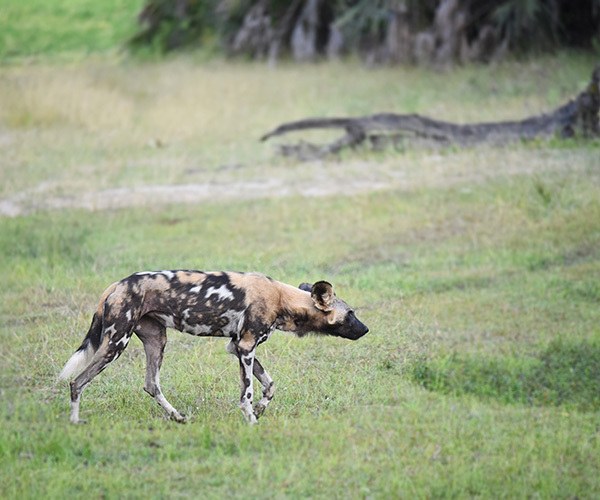 It isn’t just on the water where the Selous delivers though, on land this enormous game reserve is home to one of the last strongholds of the highly endangered wild dog. Apart from the Greater Kruger in South Africa, Mana Pools in Zimbabwe and a select few private concessions in the Okavango Delta, the Selous offers one of the highest chances for viewing these highly enigmatic canines, I was lucky enough to come across a pack and due the relaxed rules regarding off-roading, we could follow them through the bush as they hunted.
Off the beaten path in Ruaha
In complete contrast to the waterways of the Selous, Ruaha National Park is a dry and barren landscape that has baobab studded horizons and very limited water sources which makes it the perfect destination to visit after some time in the Selous.
It isn’t just on the water where the Selous delivers though, on land this enormous game reserve is home to one of the last strongholds of the highly endangered wild dog. Apart from the Greater Kruger in South Africa, Mana Pools in Zimbabwe and a select few private concessions in the Okavango Delta, the Selous offers one of the highest chances for viewing these highly enigmatic canines, I was lucky enough to come across a pack and due the relaxed rules regarding off-roading, we could follow them through the bush as they hunted.
Off the beaten path in Ruaha
In complete contrast to the waterways of the Selous, Ruaha National Park is a dry and barren landscape that has baobab studded horizons and very limited water sources which makes it the perfect destination to visit after some time in the Selous.
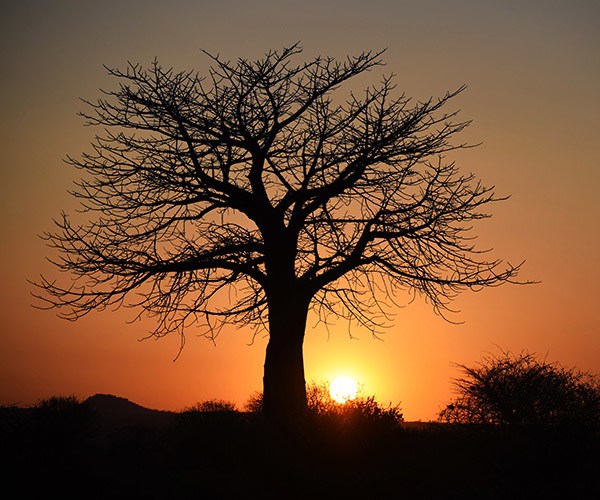 Ruaha is a park like no other, as large as the Kruger but with only a handful of lodges, any time spent here really feels as though you are in the wild. In the south of the park is an isolated lodge called Jongomero. Situated on the banks of a dry riverbed, this luxury tented camp is a brilliant place to truly immerse yourself in nature. With no other camps here, coming across vehicles is almost as rare as a pangolin and it gives you one of the most exclusive and intimate safari experiences.
Mirroring the Selous, Ruaha’s most prevalent time for game viewing is in the drier months from July through to the end of October. As the dry season progresses, herds of buffaloes congregate in their thousands. Following them closely however are Ruaha’s large lion prides looking to take advantage of any weak or struggling individuals giving rise to some documentary-worthy spectacles between two of Africa’s most fearsome animals.
Ruaha is a park like no other, as large as the Kruger but with only a handful of lodges, any time spent here really feels as though you are in the wild. In the south of the park is an isolated lodge called Jongomero. Situated on the banks of a dry riverbed, this luxury tented camp is a brilliant place to truly immerse yourself in nature. With no other camps here, coming across vehicles is almost as rare as a pangolin and it gives you one of the most exclusive and intimate safari experiences.
Mirroring the Selous, Ruaha’s most prevalent time for game viewing is in the drier months from July through to the end of October. As the dry season progresses, herds of buffaloes congregate in their thousands. Following them closely however are Ruaha’s large lion prides looking to take advantage of any weak or struggling individuals giving rise to some documentary-worthy spectacles between two of Africa’s most fearsome animals.
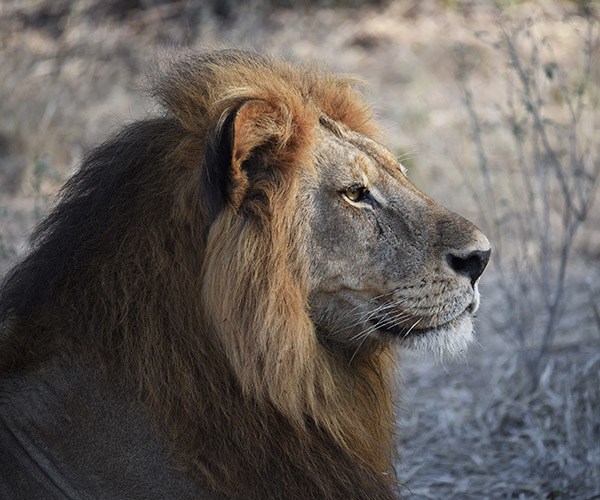 In the Northern section of the park are luxury lodges like Asilia’s Jabali Ride and the family owned Ikuka that blend perfectly into the kopjies in which they were built around. The surrounding landscape in this area varies from towering baobab forests to open plains which give the perfect habitat for a mixture of Eastern and Southern wildlife. Rarely spotted animals like the serval, aardwolf and lesser kudu are among the more elusive animals that are regularly spotted here.
In the Northern section of the park are luxury lodges like Asilia’s Jabali Ride and the family owned Ikuka that blend perfectly into the kopjies in which they were built around. The surrounding landscape in this area varies from towering baobab forests to open plains which give the perfect habitat for a mixture of Eastern and Southern wildlife. Rarely spotted animals like the serval, aardwolf and lesser kudu are among the more elusive animals that are regularly spotted here.
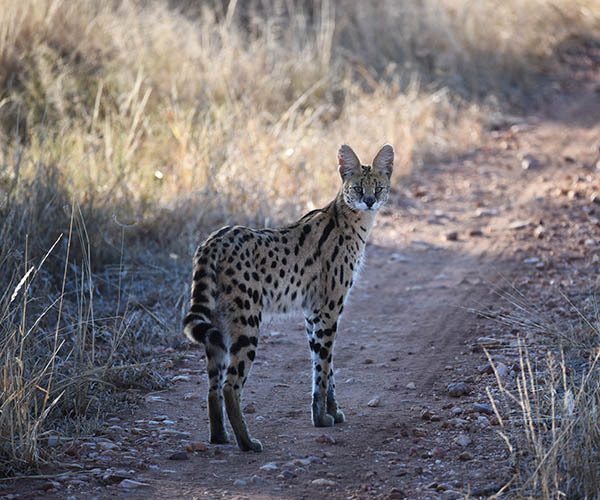 Marc Harris is Managing Director of Tanzania Odyssey. Tanzania Odyssey is a leading tour operator that has specialised in Tanzania since 1998.
If you would like to be a guest blogger on A Luxury Travel Blog in order to raise your profile, please contact us.
Marc Harris is Managing Director of Tanzania Odyssey. Tanzania Odyssey is a leading tour operator that has specialised in Tanzania since 1998.
If you would like to be a guest blogger on A Luxury Travel Blog in order to raise your profile, please contact us.Did you enjoy this article?
Receive similar content direct to your inbox.


The seclusion and isolation of these lodges caught my attention. I can’t imagine what it must feel like to be all the way out there in the middle of Africa, like that. After traveling for years, I know I’ll get there one day. Just thinking about having a fire burning at a room in the Highlands sounds like an awesome adventure before even stepping food out of the room.
HI Gary,
Yes being out in these reserves with nothing else around is truly an experience to remember forever.
Hopefully once the world is back to ‘normal’ you will get this chance!
Stay safe and healthy out there.
I’ve always found Tanzania is such an interesting country because of the safaris that feature the big 5. And the luxury lodges and resorts that you know will take care of you and give you a spectacular space to rest after all of the fun activities and adventures that you’ve had. I’ve always heard about the great migration and have wanted to experience it, as I would think most adventure and nature lover would. But as much I love being in the wild, I don’t think I am that brave enough to have that Big Cat Encounters just yet. I would need to work up my nerves to do that, although I know it’s a once in a lifetime thing.